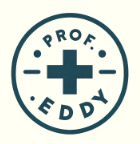The Astonishing Secret of Sasang Constitution : How 4 Key Organs Define Your Body Type
Image Credit: © bkaraivanov, Unsplash
Have you ever wondered why some people thrive on a vegetarian diet while others feel their best eating more meat? Or why certain exercises energize one person but leave another feeling drained? Korean Traditional Medicine offers a fascinating answer through its system of body constitutions, known as Sasang Constitution (사상체질) and the more detailed 8 Constitutions Medicine.
This isn’t just about general body shapes; the Sasang Constitution is a profound framework that explains your inherent physiological and energetic blueprint. But how is this constitution determined?
Today, we will unveil the foundational principle behind how your unique constitution is formed. We’re going to explore the four key organs whose interplay creates your specific body type. By the end of this article, you’ll understand the simple yet brilliant logic that governs this ancient wellness wisdom.
The Core Point: Your Constitution is a Blueprint of Organ Dominance
The central idea of Sasang and the 8 Constitutions is this: your unique body type is determined by the natural, inborn strength hierarchy of four key organs: the Lung, Liver, Spleen, and Kidney.
In traditional Korean medicine, the five major organs (O-Jang) are believed to govern the body’s physiological phenomena. While the Heart is central to life, it’s the other four organs that actively drive the body’s dynamic changes and define our constitutional differences. This is the cornerstone for understanding your Sasang Constitution.

The Reason: A Dynamic Dance of Opposing Forces
The genius of the Sasang Constitution system lies in a simple discovery: these four organs operate in two antagonistic pairs. They are in a constant, dynamic interplay, and their balance—or more accurately, their natural imbalance—is what makes you, you.
Let’s break down these two opposing pairs.
1. The Dispersing Lung vs. The Converging Liver
The first pair is the Lung (폐, 肺) and the Liver (간, 肝). Their functions are fundamentally opposite in terms of energy flow, or “Qi” (기, 氣).
-
The Lung’s energy is dispersing (발산, 發散). Think of exhaling, radiating warmth, or sweating. It’s an outward, expanding energy that spreads throughout the body.
-
The Liver’s energy is converging (수렴, 收斂). Think of pulling in nutrients, storing blood, and gathering energy inward. It’s a contracting, collecting force.
Because these energies move in opposite directions, if the Lung’s dispersing energy is naturally strong, the Liver’s converging energy will be relatively weaker, and vice versa. They exist in a seesaw-like relationship.
2. The Ascending Spleen vs. The Descending Kidney
The second pair is the Spleen (비, 脾) and the Kidney (신, 腎). They govern the vertical flow of energy in the body.
-
The Spleen’s energy is ascending (상승, 上昇). In this context, the Spleen governs digestion, pulling nutrients up and distributing them to fuel the body. It’s an upward-moving force.
-
The Kidney’s energy is descending (하강, 下降). The Kidneys are responsible for filtering waste and moving fluids downward for excretion. It’s a downward-moving force.
Just like the Lung and Liver, these two organs are in a constant push-and-pull. A strong ascending force from the Spleen means a relatively weaker descending force from the Kidneys. In a living person, a perfect 50/50 balance is impossible; this natural hierarchy is the key to your Sasang Constitution.
Example: From 4 Organs to the 4 Sasang Constitutions
The most dominant organ out of these four determines your primary Sasang Constitution. It’s a beautifully simple classification system.
-
Greater Yang (Taeyangin): If your Lung (dispersing energy) is the strongest of the four organs, you belong to this constitution.
-
Lesser Yang (Soyangin): If your Spleen (ascending energy) is the strongest, you belong to this constitution.
-
Greater Yin (Taeeumin): If your Liver (converging energy) is the strongest, you belong to this constitution.
-
Lesser Yin (Soeumin): If your Kidney (descending energy) is the strongest, you belong to this constitution.
Understanding your primary Sasang Constitution provides incredible insight into your body’s tendencies, diet needs, and even personality traits.
Diving Deeper: How the 8 Constitutions Are Formed
The 8 Constitutions Medicine system takes this one step further by looking at the secondary hierarchy within the other organ pair. This creates a more nuanced and specific classification, providing even more precise guidance for health.
Here is how the four Sasang types are subdivided:
-
For the Greater Yang (Strongest: Lung): The Spleen-Kidney balance is examined.
-
If Spleen > Kidney: Pulmotonia
-
If Kidney > Spleen: Colonotonia
-
-
For the Lesser Yang (Strongest: Spleen): The Lung-Liver balance is examined.
-
If Liver > Lung: Pancreotonia
-
If Lung > Liver: Gastrotonia
-
-
For the Greater Yin (Strongest: Liver): The Kidney-Spleen balance is examined.
-
If Kidney > Spleen: Hepatonia
-
If Spleen > Kidney: Cholecystotonia
-
-
For the Lesser Yin (Strongest: Kidney): The Lung-Liver balance is examined.
-
If Lung > Liver: Renotonia
-
If Liver > Lung: Vesicotonia
-
If this feels complex, try taking a moment to jot it down. You’ll see the clear, logical pattern emerge from these organ relationships.
Conclusion: Your Unique Energetic Signature
To recap, the entire system of the Sasang Constitution and the 8 Constitutions is built on a simple, elegant principle. Your body constitution is your unique, inborn energetic signature, defined by the dominant organ among the Lung, Liver, Spleen, and Kidney, and the subsequent hierarchy of their opposing pairs.
This isn’t about one constitution being better or worse than another. Instead, it’s a powerful tool for self-understanding. By knowing the fundamental principle of how your body is wired, you can make more informed choices about food, exercise, and lifestyle to achieve optimal health and harmony. Now that you understand the “why,” the next step is discovering which type you are.
For the original Korean text, visit here.
If you’re curious about the basics of traditional Korean medicine and health, read the following article:
The Truth About 8 Constitution Medicine: A Revolutionary Healing Framework Explained
Learn Why Studying JangSang Medicine is Important.
Frequently Asked but Silly Questions (Foods Good for the Liver??)
